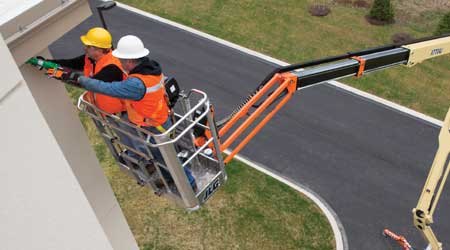Experience with Aerial Work Platforms Essential to Protect Workers
Part 2 of a 3-part article on aerial work platforms
Understanding the familiarity that workers have with lift equipment before make an equipment selection is essential, not only to ensure productive use but also to protect workers. Today’s lifts feature as many configurations for operating controls as there are models, but most feature controls workers can operate from the ground as well as from the platform.
Managers also need to be certain workers have easy access to instructions describing proper, safe control during lift operation. Most rental and sales agents offer training programs and sites that enable operators to go through supervised familiarization training. Training courses are can take place at the user’s site, provided a marked-off space is available to ensure safety. In some cases, the driver who delivers the rental equipment is qualified to provide this instruction.
Managers should make it a practice to include refresher training with each instance of lift rental. Lifts might have interlocks to the controls that require positioning switches and knobs in a certain sequence before the equipment will start. This system ensures safety by providing protection against sudden, unexpected movements.
Managers sometimes mistakenly assumed that because operators have worked with one type of aerial lift before, they know how to operate other aerial lift models. Such assumptions can lead to disaster. Many accidents and injuries result from improper or unsafe operation due to lack of training. Even experienced operators need refresher training because of the differences in control configuration.
When training does not occur or is incomplete, a manager might be forced to contact the rental agent to arrange for instruction. This situation leads to lost time and excessive costs and can cause misunderstandings about proper operation. An operator who has to spend time on the job figuring out how to start the equipment, let alone how to move it, is wasting time.
Finally, if the lift will not start, a manager might assume it is due to a malfunction, when, after losing a lot of time and contacting the agency, the problem turns out to be improper operation, using the wrong startup sequence, or failing to understand that a safety lock prevented unsafe operation.
Related Topics:










